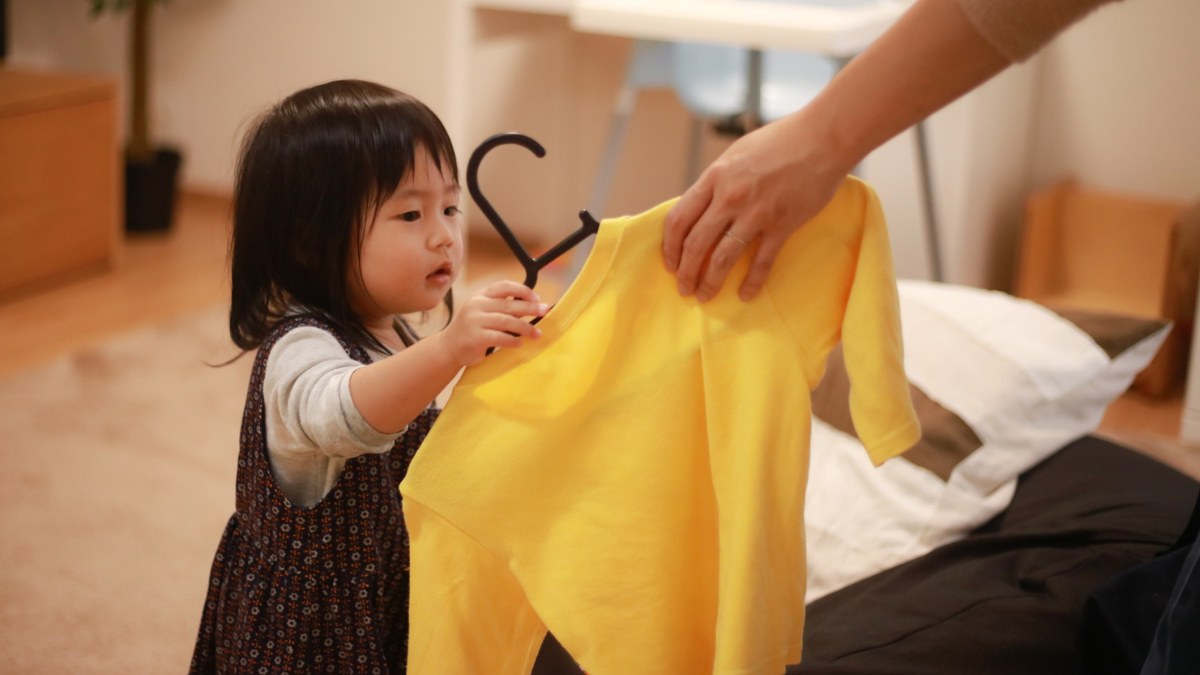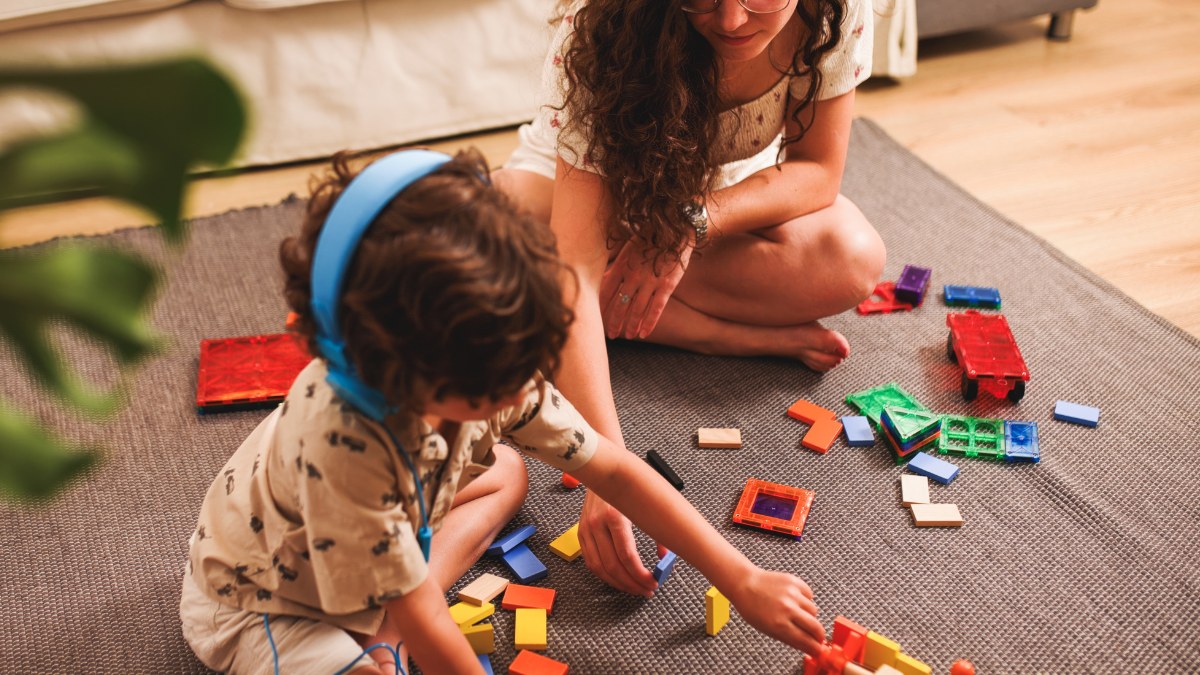What is an Autism Sensory Room?
Unlock the power of autism sensory rooms! Discover the calming and stimulating benefits they offer for individuals on the spectrum.
.avif)
What is an Autism Sensory Room?
Understanding Autism Sensory Rooms
Autism sensory rooms are specially designed spaces that provide a sensory-rich environment to support individuals with autism spectrum disorder (ASD). These rooms are carefully curated to create a safe and therapeutic space where individuals can explore and engage with various sensory stimuli. The purpose of autism sensory rooms is to promote sensory integration, self-regulation, and emotional well-being.

What is an Autism Sensory Room?
An autism sensory room, also known as a multisensory room or a sensory integration room, is a dedicated space designed to offer a controlled sensory environment. It typically consists of a variety of sensory equipment and materials that engage the senses of sight, sound, touch, and sometimes smell. The room is often soundproof, dimly lit, and free from external distractions, creating a calming and supportive atmosphere.
Autism sensory rooms are customizable to meet the unique sensory needs and preferences of individuals with ASD. The aim is to provide a safe and comfortable space where individuals can explore and interact with sensory stimuli in a way that suits their specific sensory profiles.
Purpose and Benefits of Autism Sensory Rooms
The purpose of autism sensory rooms is to provide individuals with ASD a therapeutic environment where they can engage with sensory experiences and regulate their sensory input. These rooms offer a range of benefits, including:
- Sensory Stimulation and Integration: Autism sensory rooms provide a controlled setting that allows individuals to engage with various sensory stimuli. This stimulation helps with sensory integration, which is the process of organizing and making sense of sensory information from the environment.
- Calming Effects: The sensory-rich environment of these rooms can have a calming effect on individuals with ASD. The combination of dim lighting, soothing sounds, and tactile experiences can help reduce anxiety and promote relaxation.
- Emotional Regulation: Autism sensory rooms offer a safe space for individuals to self-regulate and manage their emotions. The sensory experiences in these rooms can help individuals regulate their arousal levels, leading to improved emotional well-being and self-control.
- Enhancing Focus and Attention: By providing a controlled and structured environment, autism sensory rooms can help individuals with ASD improve their focus and attention. The sensory activities in these rooms can engage and stimulate the senses, promoting concentration and increasing attention span.
- Sensory Exploration and Skill Development: Autism sensory rooms encourage individuals to explore and interact with different sensory materials and equipment. This exploration can help develop sensory processing skills, fine and gross motor skills, and cognitive abilities.
The benefits of autism sensory rooms are not limited to individuals with ASD alone. These rooms can also be valuable for caregivers, educators, and therapists who work with individuals on the autism spectrum. By understanding and utilizing the benefits of sensory rooms, individuals with ASD can experience an enhanced sensory environment that supports their overall well-being and developmental progress.
Design Elements of an Autism Sensory Room
When it comes to designing an autism sensory room, several key elements play a crucial role in creating a supportive and engaging environment. These design elements are carefully chosen to provide a sensory-rich space that caters to the unique needs of individuals with autism. Let's explore the important design elements of an autism sensory room: lighting, colors and decor, and sensory equipment.
Lighting
Lighting is a fundamental aspect of an autism sensory room. The right lighting can significantly impact the sensory experience and create a calming and soothing atmosphere. It's essential to strike a balance between natural and artificial lighting to provide a gentle and non-overwhelming environment.
In an autism sensory room, adjustable lighting options are ideal. This allows for the customization of lighting levels to meet individual sensory preferences. Dimmable lights, colored lights, and fiber optic lighting are commonly used to create a visually stimulating and calming ambiance.
Colors and Decor
The choice of colors and decor in an autism sensory room is crucial for creating an inviting and comfortable space. Soft, muted colors are often preferred, as they promote a sense of tranquility and reduce sensory overload. Neutral tones such as blues, greens, and pastels are commonly used.
Minimalistic decor is recommended to avoid visual clutter. Simple wall art, soft textures, and nature-inspired elements can be incorporated to create a serene and visually appealing environment. The goal is to create a space that is visually engaging without overwhelming the senses.
Sensory Equipment
Sensory equipment forms the backbone of an autism sensory room, as it provides individuals with the opportunity to engage and explore their senses. Various types of sensory equipment can be included to cater to different sensory needs. Here are some examples:
The specific selection of sensory equipment should be based on the individual's sensory preferences and needs. It's important to provide a variety of options to cater to different sensory experiences and promote engagement.
By carefully considering the design elements of an autism sensory room, one can create a supportive and enriching environment for individuals with autism. The combination of appropriate lighting, calming colors and decor, and thoughtfully selected sensory equipment helps create a space that nurtures sensory exploration, relaxation, and overall well-being.

Sensory Activities in Autism Sensory Rooms
Autism sensory rooms are designed to provide individuals on the autism spectrum with a safe and stimulating environment. These rooms offer a variety of sensory activities that cater to different sensory needs. In this section, we will explore the three main types of sensory activities commonly found in autism sensory rooms: visual activities, auditory activities, and tactile activities.
Visual Activities
Visual activities in autism sensory rooms focus on stimulating the visual senses and promoting visual engagement. These activities often involve the use of colorful and visually appealing materials. Some examples of visual activities include:
- Bubble tubes: These tall, transparent tubes filled with water and colorful bubbles create a mesmerizing visual display. Watching the bubbles rise and the changing colors can be calming and captivating.
- Fiber optic lights: Fiber optic lights produce soft and gentle lights that change colors. Individuals can enjoy the visual effect created by the shifting lights, which can help promote relaxation and visual tracking.
- Projector lights: Projector lights create a soothing atmosphere by projecting images or patterns onto the walls or ceiling. This can be a visually stimulating and calming experience for individuals in the room.
Auditory Activities
Auditory activities in autism sensory rooms focus on engaging the sense of hearing and promoting auditory stimulation. These activities aim to create a calming or invigorating auditory environment. Some examples of auditory activities include:
- Music therapy: Playing calming or rhythmic music can help individuals relax and regulate their sensory experiences. Soft instrumental music or nature sounds can be soothing, while rhythmic music can encourage movement and coordination.
- White noise machines: White noise machines emit a consistent and gentle background noise that can help mask or reduce other distracting sounds. This can create a more calming and focused environment for individuals in the sensory room.
- Sound-responsive toys: These toys produce sounds in response to touch or movement. They can provide auditory feedback and sensory exploration, allowing individuals to engage with sound in a playful and interactive way.
Tactile Activities
Tactile activities in autism sensory rooms focus on providing sensory input through touch and texture. These activities aim to engage the sense of touch and promote tactile exploration. Some examples of tactile activities include:
- Sensory bins: Sensory bins filled with materials like rice, sand, or water beads can provide individuals with opportunities for tactile exploration. They can touch, manipulate, and explore different textures, helping to enhance sensory awareness.
- Textured walls or panels: Walls or panels with different tactile surfaces, such as soft fabrics, bumpy textures, or smooth materials, can offer a range of tactile experiences. Individuals can explore these surfaces by touching and feeling the different textures.
- Tactile toys: Various tactile toys, such as squishy stress balls, textured balls, or fidget toys with different textures, can provide individuals with tactile stimulation and sensory engagement. These toys can be squeezed, rolled, or manipulated to provide a range of tactile experiences.
In autism sensory rooms, these sensory activities work together to create a stimulating and therapeutic environment. They aim to support individuals on the autism spectrum by providing sensory input that promotes relaxation, focus, and sensory integration. The specific activities chosen may vary depending on the individual's sensory needs and preferences.
Creating a Home Autism Sensory Space
For individuals with autism, having a dedicated sensory space at home can provide a calming and stimulating environment. Creating a home autism sensory space involves adapting a room to meet sensory needs and incorporating DIY sensory tools and equipment.
Adapting a Room
To create a home autism sensory space, it's important to choose a room that can be adapted to meet sensory needs. Consider the following factors when selecting a room:
- Size: Choose a room that is spacious enough to accommodate sensory equipment and activities without feeling cramped.
- Location: Select a room that is quiet and away from distractions to promote a calming environment.
- Accessibility: Ensure that the room is easily accessible and safe for individuals with autism to navigate independently.
Once you have chosen the room, you can make adaptations to create a sensory-friendly environment. Some modifications may include:
- Lighting: Use adjustable lighting options, such as dimmers or colored bulbs, to create a soothing or stimulating atmosphere.
- Colors and Decor: Choose colors and decor that are visually appealing and promote relaxation. Avoid overwhelming patterns or bright, intense colors that may cause sensory overload.
- Organization: Keep the space clutter-free and organized to reduce sensory distractions and promote a sense of calm.
- Comfortable Seating: Provide comfortable seating options, such as bean bags or soft cushions, to create a cozy and inviting space.
DIY Sensory Tools and Equipment
In addition to adapting the room, incorporating DIY sensory tools and equipment can enhance the sensory experience within the home autism sensory space. These tools and equipment can be made using everyday household items or inexpensive materials. Here are some examples:
These DIY sensory tools and equipment can be customized based on individual sensory preferences and needs. Engaging in sensory activities using these homemade tools can help individuals with autism regulate their sensory experiences and promote relaxation and focus.
By adapting a room and incorporating DIY sensory tools and equipment, you can create a home autism sensory space that provides a supportive and enriching environment for individuals with autism. This dedicated space allows for sensory exploration, relaxation, and the development of important sensory skills.

Benefits of Autism Sensory Rooms
Autism sensory rooms offer a range of benefits for individuals on the autism spectrum. These purposefully designed spaces provide a supportive environment that caters to sensory needs and promotes overall well-being. Let's explore some of the key benefits of autism sensory rooms.
Calming Effects
Autism sensory rooms are known for their calming effects on individuals with autism. These rooms are designed to provide a safe and soothing space where individuals can retreat when feeling overwhelmed or anxious. The carefully selected lighting, colors, and decor in sensory rooms help create a serene atmosphere that promotes relaxation and reduces stress. By immersing themselves in a calming environment, individuals with autism can regulate their sensory input and find comfort.
Stimulating Senses
In addition to offering a calming environment, autism sensory rooms are also designed to stimulate the senses. These rooms incorporate various sensory equipment and activities that engage different senses, such as visual, auditory, and tactile experiences. By providing a controlled and structured sensory environment, individuals with autism can explore and interact with different sensory stimuli. This can help improve sensory processing skills and enhance sensory integration, leading to improved sensory awareness and responsiveness.
Promoting Relaxation and Focus
Another significant benefit of autism sensory rooms is their ability to promote relaxation and focus. The multi-sensory experiences in these rooms can help individuals with autism achieve a state of relaxation, enabling them to better manage their emotions and behaviors. The calming and engaging activities in sensory rooms can also help individuals with autism develop focus and concentration skills. By providing a supportive and distraction-free environment, sensory rooms allow individuals to engage in activities that promote concentration and attention.
The benefits of autism sensory rooms extend beyond the immediate experience within the room. The skills and strategies individuals develop in these spaces can often be applied to other environments, improving their overall sensory regulation and well-being. Whether accessed in community settings, schools, or even within the home, autism sensory rooms play a vital role in supporting individuals on the autism spectrum in their sensory needs.
Accessing Autism Sensory Rooms
Autism sensory rooms are designed to provide a supportive and calming environment for individuals on the autism spectrum. These rooms can be found in various settings, including community centers, schools, and even within the comfort of one's own home. Let's explore the different avenues for accessing autism sensory rooms.
Community Sensory Rooms
Community sensory rooms are public spaces that are specifically designed to cater to individuals with sensory processing difficulties, including those with autism. These rooms are often found in community centers, libraries, or recreational facilities. Community sensory rooms offer a safe and inclusive environment where individuals can engage in sensory activities and find respite from overwhelming stimuli.
If you are interested in accessing a community sensory room, it's best to check with your local community center or library to inquire about availability and any specific guidelines or requirements for usage.
School-Based Sensory Rooms
Many schools have recognized the importance of providing sensory support for students with autism. School-based sensory rooms are typically located within the school premises and offer a designated space for students to regulate their sensory experiences. These rooms are equipped with various sensory tools and equipment to cater to the specific needs of students.
If your child attends a school that offers sensory support, it's recommended to reach out to the school administration or special education department to inquire about the availability and accessibility of a sensory room.
Home-Based Sensory Rooms
Creating a sensory room within the home environment is another option for accessing autism sensory spaces. This allows for convenience and flexibility, as individuals can have access to the sensory room whenever needed. Home-based sensory rooms can be tailored to the specific sensory needs and preferences of the individual with autism.
Whether it's converting a spare room into a dedicated sensory space or making adaptations within an existing room, home-based sensory rooms provide a personalized and familiar environment for individuals with autism to engage in sensory activities.
By understanding the various options for accessing autism sensory rooms, individuals and their families can find the most suitable environment to support sensory regulation and enhance well-being. It's important to consider factors such as availability, accessibility, and individual needs when exploring these sensory spaces.
Sources
https://www.pediaplex.net/sensory-room-ideas-for-children-with-autism
https://www.autismparentingmagazine.com/creating-sensory-space-for-asd-kids
https://www.verywellhealth.com/how-to-create-a-sensory-room-for-your-autistic-child




%20(1).jpg)

%20(1).jpg)





%20(1).jpg)
.jpg)
.jpg)